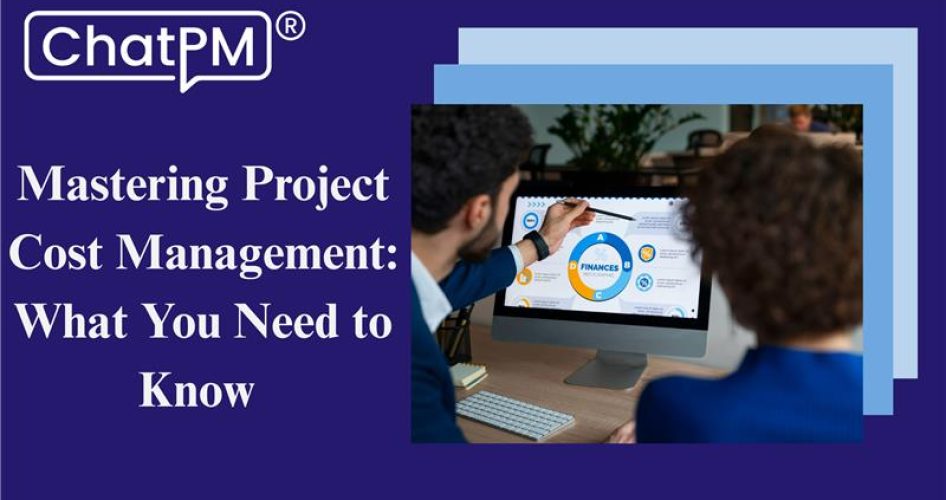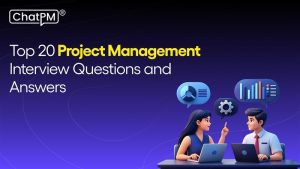Have you ever wondered why some projects stay on budget while others get out of control? What makes the difference between financial success and costly overruns? The answer often lies with project cost management. If you’re just starting with project planning or want to boost your budgeting skills, it’s crucial to know how to handle costs well. But what does project cost management include and how can it help you get better results? Let’s dive in!
What is Project Cost Management?
Project cost management is the process of organizing and regulating project expenditures. It helps to ensure that the project remains within the planned budget and using money as efficiently as possible while avoiding excessive spending. It closely monitors all expenses from the beginning to end of the project. Due to this, teams are able to make better decisions and complete the project without running out of funds. Good project cost management is important for all kinds of projects no matter how big or small they are.
Importance of Project Cost Management
1. Staying Within Budget
To finish a project without spending too much, it’s important to plan costs from the beginning. This means knowing how much things will cost and setting a realistic budget. As the work goes on, keeping track of spending helps find problems early, so they can be fixed before they get too big. It also helps the team in using time, people, and materials in the best way possible. This helps the project stay on budget and reach its goals.
2. Improving Project Performance
Good cost management helps projects run more smoothly. It keeps the team focused by clearly showing how any changes to the plan might affect the budget and deadlines. It helps spot possible financial risks early and prepare backup plans. When costs are shared openly and managed well, it builds trust with clients and team members. Everyone understands where the money is used, leading to better decisions and better results.
3. Ensuring Financial Stability Throughout the Project
Keeping a close watch on costs helps avoid spending too much, which can hamper both the project and the company’s reputation. When you understand where the money is spent, it’s easier to use resources wisely saving time, effort, and materials. This not only keeps the project running smoothly but also improves how well the team works together. For projects that need to make a good profit, managing costs the right way helps reach those financial goals easily.
Key Steps in Effective Project Cost Management
1. Planning Project Resources
Project resource planning is the process of identifying and organizing all the necessary resources before the project begins. This includes understanding what is needed in terms of people, tools, time, and funds to complete the project successfully. Effective planning helps avoid shortages, delays, or unnecessary costs by ensuring the right resources are available when required.
It begins with a clear definition of the project scope and objectives. From there, the work is broken down into manageable parts to understand the resource needs for each task. A well-structured resource management plan is then built to guide the efficient use of resources throughout the project lifecycle.
2. Estimating Project Costs
Estimating project costs means figuring out how much money will be required in every part of a project. Once the required resources are known, the next step is to understand their costs. This involves collecting details about pricing, how long resources will be needed, possible risks, and any past cost data.
Accurate cost estimation is important because it helps keep the project within budget. It also supports better planning, avoids overspending, and helps teams make smarter financial decisions. By estimating costs early, it becomes easier to adjust plans, prevent waste, and ensure that money is used wisely throughout the project.
3. Setting the Budget
Project budgeting is the process of deciding how much money will be used for different parts of the project and when that money will be spent. After estimating the costs, the next step is to organize those costs into a clear plan. This includes assigning amounts to specific tasks, needs, or time periods.
Budgeting helps make sure the right amount of money is available at the right time, without overspending. It also gives the team a clear picture of how funds will be used during the project. With a well-planned budget, it becomes easier to manage expenses, track progress, and keep everything under financial control from start to finish.
4. Monitoring and Controlling Costs
Cost control means keeping a close watch on how much money is being spent during the project. It helps to make sure that the actual costs don’t go beyond the planned budget. This includes regularly checking expenses, tracking progress, and staying ready to make changes if needed.
It is a good idea to check costs daily, weekly, or monthly depending on the project. By comparing the planned costs with the money actually spent, teams can find problems early and fix them. If something costs more than expected, changes can be made to save money. Cost control helps the project stay on budget and avoid any last-minute money issues.
Project cost management helps keep your project on track and within budget. By planning resources, estimating costs, setting a budget, and watching expenses closely, you can avoid surprises and make smarter decisions. It helps your team work better, saves money, and leads to successful project results. Whether your project is big or small, managing costs the right way makes a big difference.
Ready to manage your project costs more effectively? Put these simple steps into action and make every project a success from start to finish!







